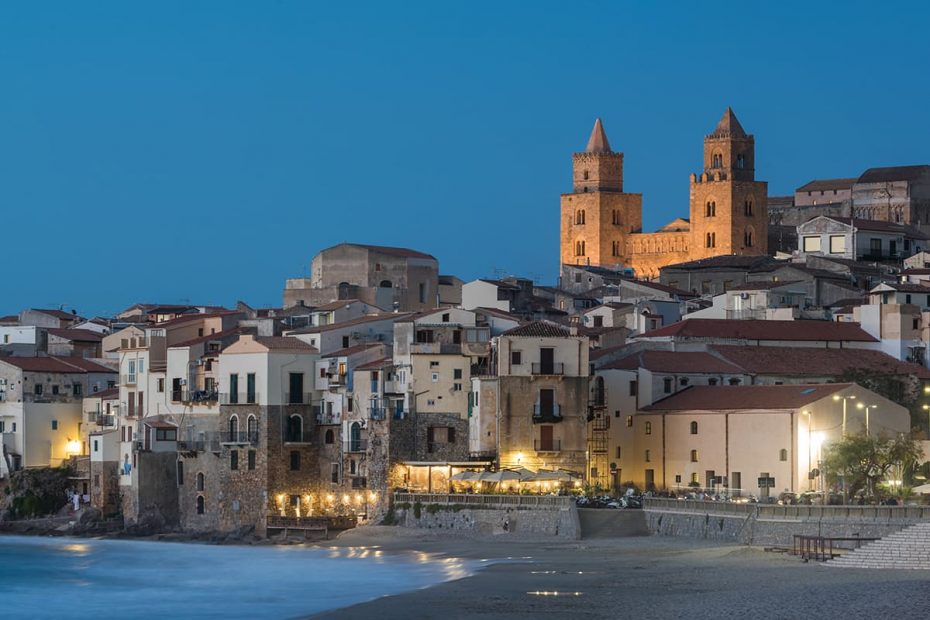Are you thinking of treating yourself to a trip to one of the most fascinating Marian villages in all of Sicily? Then this guide to all the things to do in Cefalù is what you’ve been looking for. Overlooked by a fortress that has protected it for millennia and washed by a beautiful sea, Cefalù is one of the must-see destinations for those who want to explore Sicily. It is not by chance that it has been included in the list of the most beautiful villages in Italy. While the jewel in the crown is certainly its cathedral, listed by UNESCO as a World Heritage Site, there is no shortage of other treasures capable of surprising and fascinating.
Things to do in Cefalù: the monuments of Via Vittorio Emanuele
Let’s start this guide to discover to all the things to do in Cefalù from the place where once stood the Porta Ossuna, one of the four gates to the village. Once you have parked your car on the Giardina Promenade or in one of the paid parking lots, you will arrive at the beginning of Corso Vittorio Emanuele, from where you can begin your exploration.
Municipal Theater

Immediately on the right is the Municipal Theater of Cefalù, named after the violinist Salvatore Cicero. This little jewel was built in 1818 and has undergone several changes over the years. In the 20th century it was transformed into a cinema and during the Second World War it was even used as the headquarters of the German troops. On the ceiling is a large oval painting by the artist Rosario Spagnolo. The painter depicted the allegories of the arts with Thalia, the muse of comedy, Terpsichore, the muse of dance, and Euterpe, the muse of music. The Municipal Theater of Cefalù became world famous thanks to the Oscar-winning film Nuovo Cinema di Paradiso by Giuseppe Tornatore.
Medieval washhouse
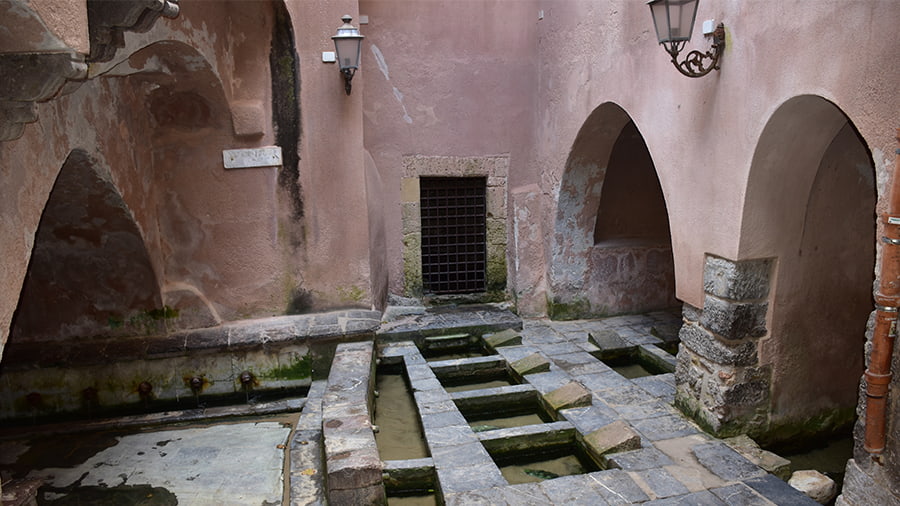
Continuing along via Vittorio Emanuele we come to one of the most famous monuments of Cefalù: the ancient medieval washhouse. A staircase made of “lumachella”, a special local stone, leads to a partially covered room. Here are the basins used in the past for washing clothes. The water of the river Cefalino flows through twenty-two cast-iron mouths and ends its course in the sea. Legend has it that it was formed by the tears of the nymph Naide, who regretted killing her bridegroom after discovering his betrayal.
Pescara Gate
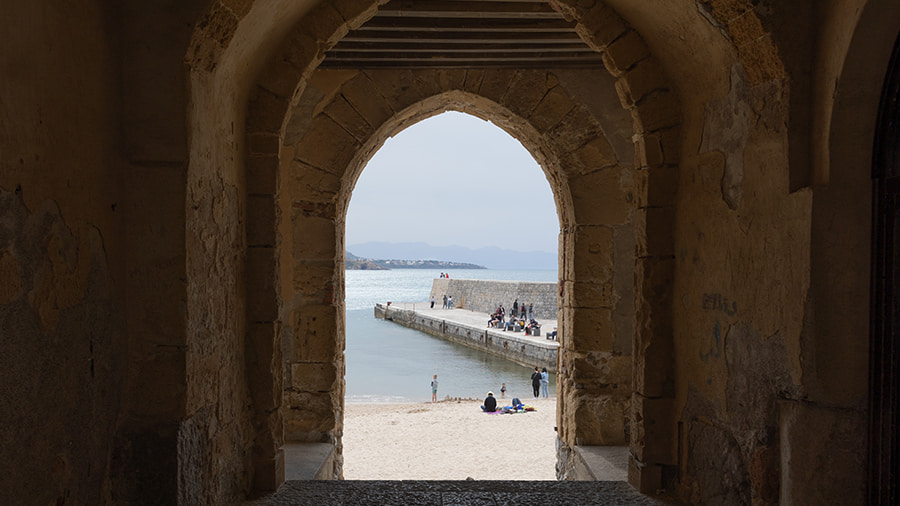
The walk along Via Vittorio Emanuele ends at Porta Pescara, from where you can admire one of the most beautiful and famous views of Cefalù. The Gothic arch of this gate frames a unique landscape with the beach, the fishermen’s boats and the sea. The construction of Porta Pescara dates back to the period between 1200 and 1300, when Cefalù was ruled by the powerful Ventimiglia family. The name comes from the viceroy Francesco Ferdinando d’Avalos, Marquis of Pescara, who supervised its construction and expansion in 1570. The gate is also known as Porta Piscaria and Porta Marina, because in ancient times boats used to land here after fishing.
Things to do in Cefalù: Piazza Marina and the megalithic walls
After passing through Porta Pescara, the itinerary of Cefalù continues to Piazza Marina. From here you can enjoy a panoramic view of the ancient port of Cefalù, the open sea and a large part of the ancient fortifications of Cefalù, the so-called megalithic walls.
The megalithic walls of Cefalù

The megalithic walls of Cefalù are the fortification lines of the ancient Greek city. Their initial construction dates back to the period between the 4th and 5th centuries B.C. and they were later extended and reinforced in the Middle Ages. They are so called because of the large size of the blocks with which they were built. In fact, the walls are about 6 meters high and were built using the dry-stone technique by superimposing blocks three meters thick. There were two different lines of fortification. A lower one that protected the city from sea attacks and stormy seas. Then there were the upper walls, some of which are still visible, which protected the Rocca and the Castle of Cefalù. There were four different gates in the walls, but the only one that has survived is Porta Pescara. After the 16th century the walls began to be dismantled and the blocks were used to build houses.
Bastion of Capo Marchiafava

From Piazza Marina take Via Carlo Ortolani di Bordonaro until you reach a small alley on the left. Go to the end and you will find the bastion of Capo Marchiafava. It is an ancient defensive bastion with a polygonal base, built in 1642. The name comes from the combination of the Arabic word Marsa, which means port, and the Sicilian word favara, which means spring. In the past there was a spring here, whose presence is testified today by the presence of a fountain in the center of the square. The church you see is the church of the Itria. The belvedere of Capo Marchiafava is another panoramic point not to be missed. From here you can see the so-called “Drunken Rock” and, weather permitting, the Aeolian Islands on the horizon.
The Postierla

At this point, return to Via Carlo Ortolani di Bordonaro and follow it to the end. You have reached the Postierla of Cefalù, a small opening in the megalithic walls used by the inhabitants to reach a spring of fresh water. This place was known to all sailors since Greek times, because they could get water without leaving the boat.
Things to do in Cefalù: The Duomo and Via Mandralisca
The itinerary to discover the things to do in Cefalù now takes us to one of the jewels of Arab-Norman art in Sicily. The visit to the Cathedral of Cefalù can be long if you decide to buy the ticket that includes the visit to the towers, the southern roof, the mosaics, the sacristy, the treasury, the Sansoni room and the bishop’s chapel and the canonical cloister. If you want to take a break, the “Duomo” bakery, located in the right corner of the square, will not disappoint you.
Cefalù Cathedral

In your list of things to do in Cefalù, you cannot miss its most precious jewel: the Cathedral. Built during the reign of Roger II, since 2015 the church is part of the Unesco serial site: Arab-Norman Palermo and the Cathedrals of Cefalù and Monreale. What makes this church special are its mosaics, made by Byzantine craftsmen, which occupy an area of about 650 meters. Depending on the ticket you buy, you can also visit the roofs of the Cathedral, from which you can enjoy a fantastic view, and the cloister. This is one of the three existing Norman cloisters in Sicily, along with those of Monreale Cathedral and Lipari Cathedral, as well as the oldest.
Mandralisca Museum
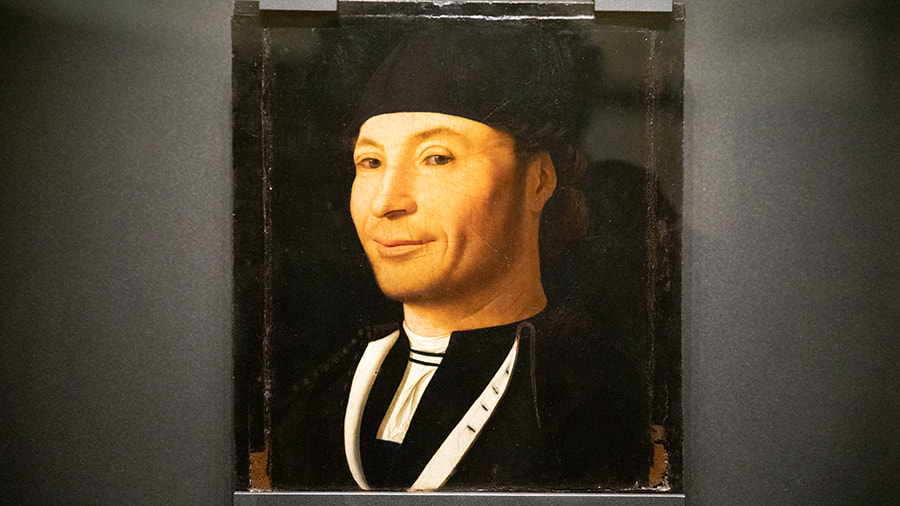
From Piazza Duomo let’s go to Via Mandralisca, where there is another important stop on this itinerary. The Mandralisca Museum is one of the must-sees in Cefalù. Among the many works of art in the collection, there is an absolute masterpiece of international renown: the Portrait of a Man by Antonello da Messina. The museum was born from the donation to the city of Cefalù of all the extraordinary objects collected during his lifetime by Baron Enrico Pirajno, Baron of Mandralisca. In addition to a rich picture gallery, there are five other sections: Archaeology, Numismatics, Malacology, Naturalistics and Antiques.
Church of Immacolatella
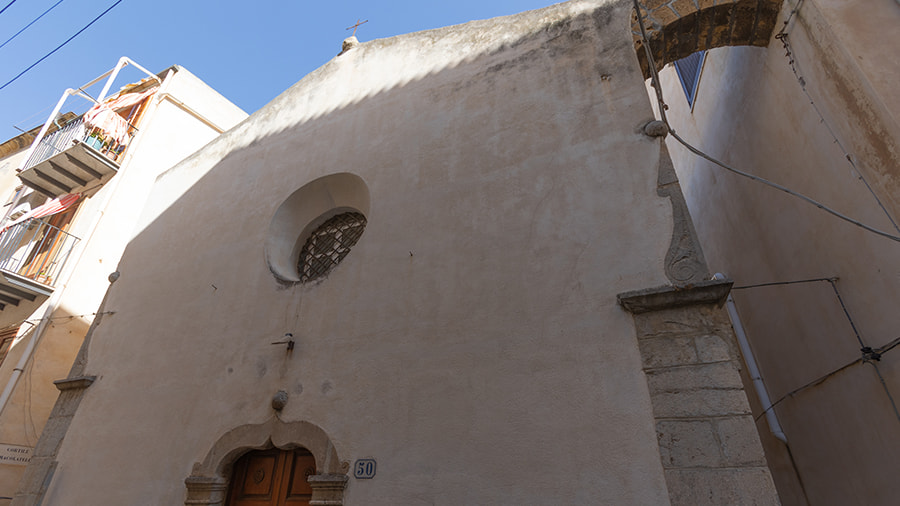
A short walk from the Mandralisca Museum is the Church of Immacolatella, whose construction dates back to 1661. The interior has a single nave and houses in a niche a statue of the Virgin adorned with silver. The walls were originally painted with figures of martyred saints, vases with flowers, cherubs and scrolls. In the 1800s the building underwent radical changes, and perhaps as a result of the burial of people who had died of cholera, the whole building was whitewashed with quicklime for hygienic reasons. The paintings were largely recovered during a restoration in the early 2000s.
Things to do in Cefalù: the monuments of Corso Ruggero Settimo
Let’s continue this itinerary of things to do in Cefalù with a walk along Corso Ruggero Settimo. It is the main street of this beautiful town and, in addition to the monuments, you can also visit the shops and perhaps buy some local specialties.
The Antica Farmacia Cirincione
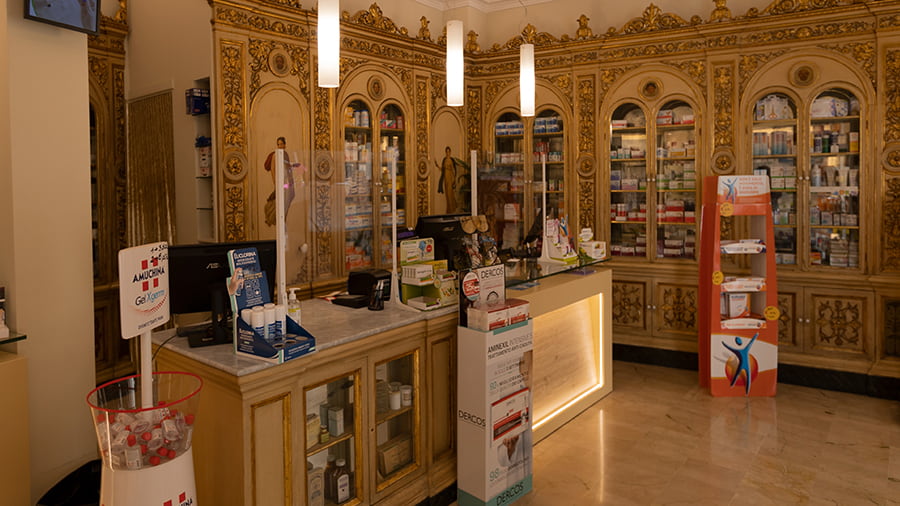
As soon as you enter Corso Ruggero Settimo, you will find an authentic piece of history on your left. It is the Antica Farmacia Cirincione, one of the four oldest remaining pharmacies in Sicily. Founded in 1820 by Donna Maria Teresa Longo, it is now in its fifth generation. Inside you can still admire the original 18th century Venetian style furnishings. You will be able to see the antique furniture with golden lacquered showcases that are still used to keep medicines. The decorations include images of ladies, satyrs and knights that are very reminiscent of the Pompeian style.
Church of Purgatorio

Continuing the walk, on the left you will find the Church of Purgatorio or Santo Stefano. Built in 1668, it was the seat of the Confraternity of the Blacks. The interior of the church is divided into three naves by two rows of monolithic columns. On the altar at the end of the nave is a large painting from 1813 depicting Christ giving the Eucharist to souls in pain. To the right of the entrance is the marble sarcophagus containing the remains of Baron Enrico Piraino di Mandralisca.
The Court of the Stars and the Hellenistic-Roman Road

This brings us to one of the most curious buildings in Cefalù: the Court of the Stars. It is a space designed by the architect Marcello Panzarella in 1984 to replace an old collapsed building. The building is composed of two squares staggered at different heights, creating a link between the streets of the historical center and the inside of the courtyard. In the center of the pavement of the first square is an eight-pointed star, which gives the building its name. The Courtyard of the Stars is now used as a multipurpose space where events can be organized and access is free. By paying a separate ticket, it is possible to visit a Hellenistic-Roman road that was excavated during the construction of the courtyard. It dates back to the period between the 1st century B.C. and the 1st century A.D., and the canals for drinking water and sewage are still visible.
Former Church of the Annunziata

The building seen next to the Star Court is the former Church of the Annunziata. The church, built in the 16th century, after a long period of restoration, is now used as an auditorium. The façade of the building is very simple, but enriched by a stone portal, whose lintel is decorated with a relief scene of the Annunciation. On the south side, there is a bell tower with an elegant mullioned window. It was part of the so-called Osterio Piccolo, one of the palaces of the Ventimiglia family, together with the nearby Osterio Magno. The interior of the church has a single nave that ends in a wide apse. In the floor there is a large crypt where, according to tradition, the architect and sculptor Jacopo Del Duca was buried.
Osterio Magno

The Osterio Magno is another jewel among the things to do in Cefalù. The building is easily recognizable by its splendid medieval three-mullioned windows on the elevation. The name Osterio Magno comes from the Latin words hosterium, which means fortified palace, and magnum, which means big. It was the winter residence of the powerful Ventimiglia family, who had it built in the 13th century. The Osterio Magno complex covered a much larger area than today and included gardens and buildings of different ages and architectural styles. According to a reconstruction, it was at the center of two large buildings that bordered an open space. A large archway over the road connected the current complex to the buildings in front of it, where kitchens and service rooms were located. Visitors to the Osterio can also see the remains of a Hellenistic residential complex and a cistern dug into the perfectly sealed rock.
Church of the Trinità alla Rocca
When you have finished visiting the Osterio Magno, take the street you see on your left, Via Caracciolo, which will take you right in front of the Church of Trinità alla Rocca. It was probably built in the 16th century and, together with the towers of the Cathedral, it dominates the skyline of the small town. Inside the church there is the altar in stone from Trani, donated by the architect Renzo Piano. It is made of a single square block, but the central slab, which faces the congregation, is made of Afghan lapis lazuli, cut so that the veins are mirrored to form a cross.
Church of Maria Santissima della Catena

Going back to Corso Ruggero and continuing along it, you will find the Church of the Catena. It was built in 1780 on the site of the Porta di Terra, one of the ancient entrances to the city. If you look closely, in the tower on the right, you can see the remains of the megalithic walls in its base. The front of the church is characterized by a loggia with a wide round arch supported by two pairs of columns with Ionic capitals. The interior has a single nave and is lit by the windows on the elevation and those that open on the southern flank.
Things to do in Cefalù: visit the Rocca

To complete this guide of things to do in Cefalù, there is one very important element missing: the Rocca. It is the large rock that dominates the entire city, reaching 270 meters above sea level at its highest point. It seems that the name Cefalù comes from kefalis, a Greek word that means head and refers to both the shape of the rock and its location. The rock of Cefalù has been visited by man since prehistoric times, but the most important archaeological remains are the so-called Temple of Diana, which dates back to the 4th century BC, and the ruins of the castle of Cefalù. The Rocca can be visited every day of the year. From the top you can admire one of the most beautiful views of Sicily. The route to the Rocca di Cefalù offers few shady places, so it is recommended to do it during the less hot periods of the year and in any case to avoid the hottest hours of the day.
